Executive Summary
The purpose of this dissertation is to investigate the factors affecting student’s decision of join international universities in Dubai.
To concentrate on this objective, this paper has designed four research questions those address the theoretical framework of higher education, essential factors in students’ perspective, influential factors those induce students to study in Dubai International Universities, and the national education policy influence.
Rodrigues & Jayashree (2009) reported that Dubai populations mostly consist of foreigners and 90% of the workers in the private sector come from international market, and 24,333 foreigners come into the city every month either seeking opportunities in employment and/or education. However, the first chapter of this paper concentrates on background of problem, rational of the research, scope and limitation of this project.
The literature review provides a theoretical framework of higher education, current educational system in Dubai, student’s trend towards higher education, basic factors that influence the international students, and key issues to choose Dubai International Universities.
In addition, this chapter also focuses on Student’s new motivation model, or re-definition of higher study, hypothetical structure of higher education system of Dubai, and master plan for Dubai higher education.
On the other hand, methodology discusses research approach, data collection process, interview method, data analysis process, number of respondents, and constraint of data collection process. Moreover, the findings and results have generated from the survey data and based on findings, this paper has ultimately drawn the recommendation and conclusion.
Introduction
Background of Study
This dissertation has organised with the background of present of changing the dynamics of the higher education market arguing with the factors effecting the student’s motivation to joining in the international Universities in context of Dubai.
In Dubai, the Universities operating internationally are in greater than ever pressure to expand their value chain while the students at higher education have already gaining accelerated motivation to take into a number of considerations, which offers the higher educational visions of the students comparing with the offerings of international Universities in context of their competitors.
Dubai the one of the seven states of UAE has started its journey to modern education just in 1962 with twenty schools and at present, it has around sixty- seven national and international Universities
Pathak and Pathak (2010) addressed that the higher educational institutions as a service industry has been passing through momentous changes globally while the traditional character of public funded Universities as ”education is not a commodity for making profit” has been diminishing worldwide and replacing by the bulk investment oriented private Universities and considered as service industry.
UNESCO (2009) pointed out that the recent higher educational trend globally and recognised that the diversification of higher education to meet the escalating demand for higher education connecting to the sensitivity to the national needs and financial resources.
Heck and Crislip (2001) argued that the higher education policies has concentrated on debate of the quality of education including performance tests and their alternatives concerned with the standardised multiple-choice tests at the contrary of direct and indirect writing assessments which is also another dilemma of education in Dubai.
With such a background, this researcher has inspired to investigate factors affecting the decisions of students to join international universities in Dubai.
Rationale of this Study
It has evidenced that there is very small number of higher educational research for Dubai and UAE but the existing higher educational literatures have not yet been addressed the dilemma of harmonising the value chain of the International universities integrating with factors motivating students to joining for higher education at international Universities.
This dissertation has take up this issue and aimed to coordinating the pact that results most advantageous solution acceptable to the value chain of international Universities in Dubai and their management. It also intended to generalise the standard of factors influences the students to selecting international Universities for higher education addressing the research questions.
On the other hand, this dissertation would demonstrate the higher education model, student’s motivation model and argue for optimal solutions for coordination with the offering made by the international Universities relevant to the factors influence the selection criteria of the students to joining the international Universities.
Shults (2008) explained that the higher education policies are more concerned with the progressively more antagonistic and disorderly environments of the management structures at the institutes which is insufficient to facing the challenge of quick shifting knowledge industry while the society is arguing to represent optimistic technological needs, social psychology, encouraging organisational scholarships and affirmative organisational behaviour.
In addition, the most worth mentioning dilemmas is that the higher educational policy of the nation as well finance literature has basically mistreated to take into consideration of the impact of prospective students while they are the facial point any higher educational research. Thus here exists a major research gap to integrating the factors affecting the decisions of students and coordinating them with the higher education value in Dubai.
This type of gaps could be attained by conducting students’ motivation and identifying those factors to bring improvements at higher education value chain and such studies would be able to quantify the short and long run costs and benefits for the contemporary higher educational institutes including the international Universities to enhance their value chain as well as management process improvements.
Consequently, for this dissertation it is important to look for literature search on coordination of higher education value chain and models including students motivating factors at higher education with the changing dynamics of educational progression in Dubai. Thus, it is rational for this researcher to investigate factors affecting the decisions of students to join international universities in Dubai.
Research Questions and Objectives of the Study
This dissertation designed to study the factors affecting student’s decision of join international universities in Dubai.
In order to focus on this goal, the paper would respond to the following research questions, which will help to reach a conclusion what is the main influence that affects decision-making power of the student to study in international universities in Dubai. However, the researcher has decided to find out answer the following four questions and there are –
- To what extend the theoretical framework of higher education and student’s motivation has influenced the selection prospects of higher study?
- What basic factors students must take into account for higher education?
- How does the national education policy influence the student’s perceptions as well as the strategy of international Universities?
- How foreign Universities at Dubai influencing the student’s joining trend
These four-research question is important because the attitude of the students can be found from the answer of this question and the researcher will assess the answer both in positive and negative theoretical aspects.
Limitations of the Project
The researcher has suffered many constraints to formulate this dissertation, for instance –
- Lack of reliable secondary data sources related to the topic of the dissertation and unavailability of student’s view regarding the decision-making process;
- Though there are few available journal but the rate of this academic articles is out of reach of the researcher;
- Topic of some articles is lucrative but the content is not too strong to serve the present purpose;
- low response rate is the main barrier of data collection because it was difficult to collect data from students as they are busy with their assignments though they are the main target interviewees;
- Knowledge gap and lack of experience in conducting such kind of research;
- Selection of interview method, unwillingness of the respondents, and communication problem;
- Another problem is limited budget for the primary data collection process or field survey;
- The researcher has to complete the entire dissertation within very short period.
Scopes of the Study
- The University allowed sufficient word limit to organise the paper or bring a proper outcomes from this research;
- The author has selected an exclusive research project, which gives the chance to study on a variety of issues, such as, the theoretical framework of higher education, consideration of students, environment of Dubai International University, and the comparison the quality of foreign universities;
- As the international universities in Dubai is a potential development criterion from both financial and global educational perspectives, conduct a research upon this topic would be helpful to attract additional students from foreign countries;
- The most important point is that, the researcher has the opportunity to carry out a real research by primary data collection to know the issues affecting the decisions of students to join international universities in Dubai;
- This dissertation has enough scope to find out the loophole of Dubai International universities in terms of foreign universities, like Dubai Universities can compare their subject range, ensure equal opportunities, existing facilities, educational environment, merit of the students, integration of information technology; and overall costs of the course along with accommodation costs;
- As the existing students are satisfied with the service of the International Dubai University, this dissertation has opportunity to provide recommendation to compete with world class universities;
- Finally, the researcher would intend to fill in the gap of the outcomes of previous research.
Literature Review
Fundamental Phases of Higher Study
Usually, higher studies have started with the graduation level after higher secondary level has completed and hence post graduation or master’s degree, doctorate degree respectively. For instance, here fundamental stages of the engineering course have plotted bellow.
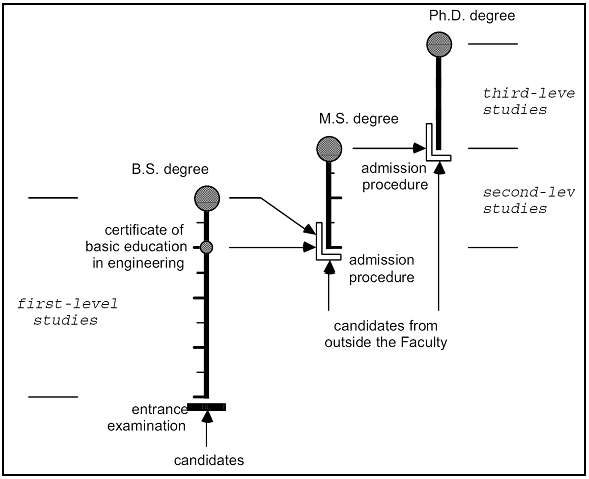
Theoretical Framework of Higher Education
Globally, higher education has covered vast market edge. Usually, higher education market has patronized by the demand supply component’s transformation as well as fluctuation. From last few decade higher education institutions have started to enter into global competitive scheme.
Circular flow of higher education has required correlating among generating value, efficiency develop on their provided curriculum, supply of funds over and above make available value chain infrastructure towards their precious teachers and students.
Common hypothetical framework of the higher education can be well analysed by Porter’s generic model of value chain. Performance of the value chain ingredients has evaluated and analysed by the organization’s function implementation manner. Considering requirement of this paper both traditional and current value chain model has discussed here (Pathak and Pathak, 2010).
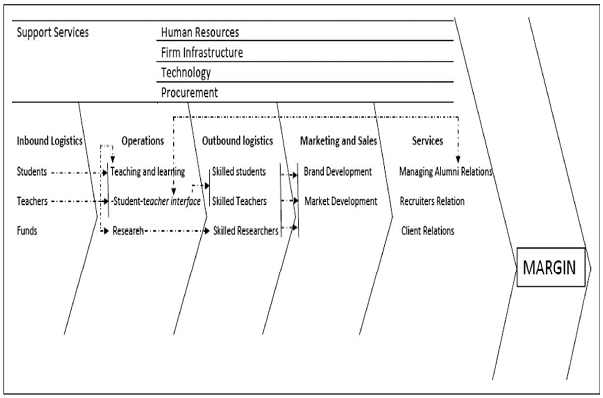
Traditional Versus Current View of Higher Education
In simpler form, higher education is the process of exchanging values between two parties the mentor and the learner. Porter’s generic model has analysed how dynamics of the higher education has transformed by the value generating movements.
It has well informed that the term service has featured by four unique issues (Intangibility, inseparability, non-inventory and inconsistency) those have significantly warped with the traditional value chain model of higher education though there have several limitations of functioning or make correlation among diverse levels of the model. Since education market is a pure service sector, Porter’s generic model cannot be applied here through raw form.
However, simple modification of two broader phases of the model can admirably draw the hypothetical explanation on higher education. Compare to recent concept of higher education, the traditional framework has committed to non-profit educational entrance where student’s competency was greater valued.
On the other hand, current educational curriculum has rather unbundled than ever where cost of education, demand for specific courses and supply of desired needs have required. In simpler form, current higher education is governed through a commercial outline similar as the free and capitalistic market organism.
Subsequently, impact of the current higher education system has significantly sensitive impact on socio cultural values. Hence, discussion on the subject matter of the higher education has greater scope of been uneven if the education policies could not be modified limitations of the traditional views.
As a result, current view of the higher education has arisen to illustrate the scenario after modification of the value chain model (Pathak and Pathak, 2010).
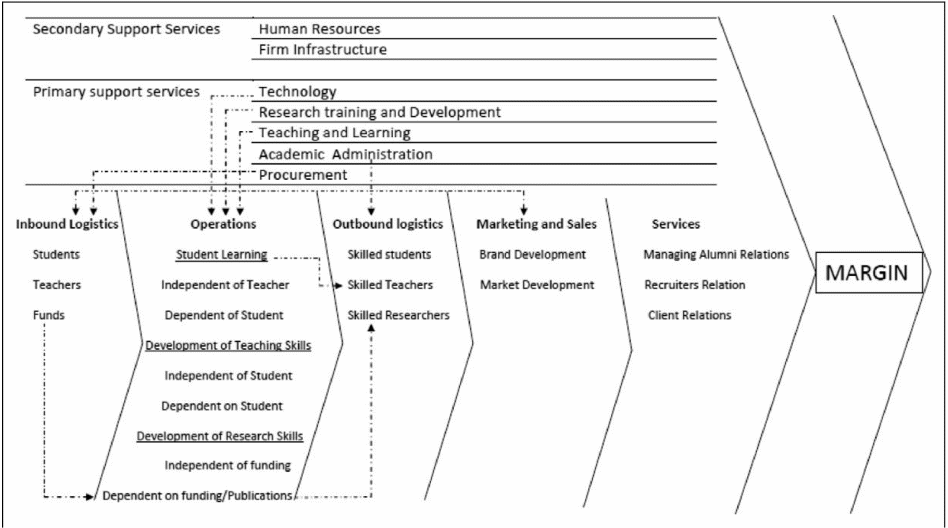
Hypothetical Illustration Student’s Trend Towards Higher Education
Both literal and Dubai higher education analysis part of the paper have scrutinized decision-making levels of the student during entering into higher education.
In the above discussion on hypothetical outline of the higher study, learning atmosphere has evaluated and now in this section student’s decision-making strategies have illustrated with the aid of elaboration theory of the learning model (Reigeluth 1999), which have also termed as the instructional design theory. Key objective of this model has to shorten decision-making levels and conversely amplify scope of higher study.
In this way, the elaboration theory has instructed diverse mode to fulfil various needs and demand in different learning atmosphere. Motto of the theory referred that this learning model has provided sufficient support to develop decision-making efficiencies. Application of the model has made scope for the student to categorise their higher study options into two form either detail or narrower or both (Reigeluth, 1999)
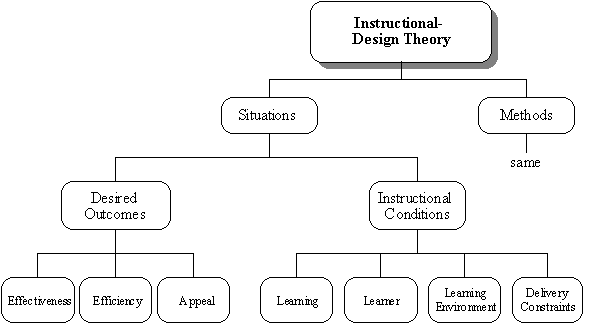
Alternatively, the learning model of the elaboration theory has offered a customised package (Sequencing simulation, apprenticeship, goal-based scenarios, problem-based learning and other kinds of situated learning), which has strategically more holistic. Moreover, followed by an authentic mission, standardization has less preferable than customisation. In following diagram student’s decision making steps has plotted along with a brief discussion.
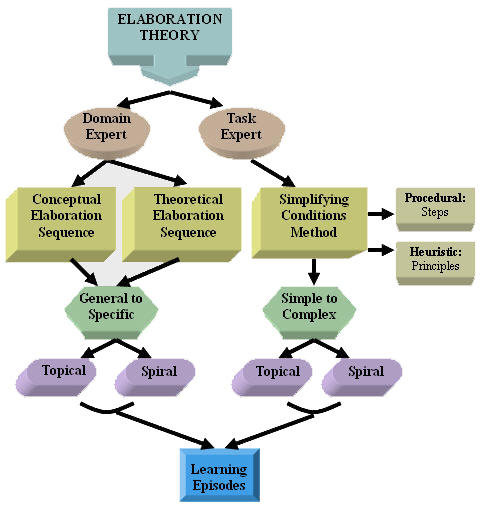
- The term “scope” has needed to analyse what is the current curriculum of a university and what are the demand of a learner/student from them.
- Sequence has referred the respective levels of information required during learning.
- Topical sequence: where new learning program has started whilst previous one has finished appropriately.
- Spiral sequence: fundamental complexity of learning has discussed in this section.
- Domain expertise has illustrated about the modes how a student will be skilled after completion of study.
- Conceptual elaboration has defined about the availability of leaning scopes as well as future prospect.
- Theoretical elaboration has deal with the key objective of learning where inclusive principles have analysed and job opportunity as well.
- Task expertise: in this stage the SCM (Simplifying Conditions Method) policy has offered a directive package (Analyzing, selecting, and sequencing) for analysing content of the learning scheme. According to this policy students have required to follow simple to complex hierarchical order/series during decision making of higher study.
- Epitomizing: here a learner has discovered over the simplest form of the learning.
- Elaborating: it is an inverse stage of the epitomizing where learner has assign to seek complex areas.
- Procedural task: this level of the learning theory has direct how efficiently response in a proper time
- Heuristic/holistic task: another response phase where students have to consider several issues (Principles, guidelines, or casual models)
- Hierarchical task: repetition of the stage task expertise
Key Merits of the Learning Model
- Follower of the learning model of the elaboration theory has encouraged moving toward the meaningful learning curriculum.
- Encouraged to enter into the established and cognitive organization where continuation and transfer have rather flexible.
- Have rather thirst for the cognitive domain
Basic Factors Students Must Take Into Account for Higher Education
Considerations for Higher Education
In the previous section of the paper, literal framework and student’s motivation for higher study have discussed briefly and at this point what are the preferable issues for which students have motivated for higher study have analysed considering students perception.
In order to analyse students view, this section has introduced student’s new motivation model and consequently revised form of the higher education definition from view point of a learner has also be illustrated.
Student’s New Motivation Model
There have several learning models where higher education framework has developed and analysed profoundly but working paper on student’s inspiration model including student’s perception has still rare.
In order to fill this break Gomez (2008) has drawn a motivation model considering student’s view during they have studied in the higher secondary or secondary level. During composition of the model Gomez has applied IQA (Interactive Qualitative Analysis) strategy where five major dynamics have highlighted. Here are the motivation factors.
- Assignment attributes have vital impact on student’s view.
- Learner’s belief and feelings have also stimulated their decision making where to study and why to study.
- Social life or the standard of living during secondary school has significant influence on the higher study decision making of a learner.
- Learners/student’s preference has controlled or guided a student’s daily life additionally during at school as well.
- Guideline of the mentors: instructions as well as acts of a mentor have both constructive and destructive impact on a student’s view and hence learner’s has inspired for higher study.
After chronological study of these dynamics, students have achieved skilled to keep correlation between diverse factors of their study and social life. Analysis of these dynamic with the aid of IQA strategy has provided adequate environmental support to formulate new student’s motivation model where both supply and delivery components have taken into account.
During manufacture of the new student’s motivation model a survey has conducted where student /learner’s diversity management has emphasised extensively and conversely, participant students have support spontaneously. The survey has required sharing student’s motivational experiences during secondary school and higher secondary level.
Alternatively, student’s has also asked for classify dynamics of the inspiration and drawn a correlation among motivational forces. Additionally, the survey has made scope for the learners to identify supplementary motivation issues, which have great influence on their higher study. Hence, following are the two marginal forces on which student’s have pay more concentration during higher study.
First, family support or involvement: modes of the family support during both secondary and higher secondary level have influence a lot of learner’s study life’s beginning phase efforts.
Second, future prospect evaluation: in this stage student has analysed how their present effort would be support they higher study effectively. In short, success in future has predicted or in another word, mission, vision, objective and goal of higher study has drawn.
At last, analysis of the overall discussion and examination of the student’s new motivation model has developed in such a way where the additional two forces has taken into account passively since the learner’s has faced inadequacy of study materials. In following diagram student’s new motivation model has summarise.

During summary of the new motivation model, mentor’s performance and manner has considered as the primary factor of the motivation model since a learner has motivated for the first time throughout teacher’s manner/teaching method. Additionally, assignments during class hour have symbolized teacher’s schooling strategy and have a vital impact on learner’s social life/regular life style in different ways.
And hence, in many cases it has evaluated that due to class assignment many students have spend less time for their social interface and conversely, more interested to group work to complete class assignments though social interaction of a student has significantly composed both school task and professional efficiency as well.
On the other hand, students have emotionally influenced to construct preference to choose higher education program and tendency to complete their educational tasks during proper time. In this way a learner has motivated towards higher education and can able to appraise his or her own study parameter of achievement.
Student’s Re-Definition of Higher Study
Young generations have eager tom learn new skills and fond of utilization new technologies. During this globalization era, study program as well as information technologies have transformed drastically. Considering these point following are the revised parameter of higher study from viewpoint of the student. (Pathak and Pathak 2010)
First, scope of enrolment of the student: it is an imperative issue for a student to know about learner’s enrolments ratio offered by higher study institutes.
Second, scope of research, scholarship and publication aid: most bright students have sought these three issues before starting higher education since these three would be provided great scope of job opportunity as well as further education such as post graduation or doctorate.
Third, teaching method of both teacher and university: teaching strategies of a university as well as its mentors have made easy of higher education decision making.
Forth, scope of research training and further development services: academic intuitional support on individual’s research activities have greatly motivated a learner for higher study.
Moreover, university support for the supervision of the research tasks, provide fund for the research proposals as well as initiative taken for the commercialization of the research results have also significantly motivate students for continuation their higher study after graduation.
Fifth, scope of modern technological utilization: besides computer lab facilities both educational and professional courses on technological infrastructure like computer programming, hardware and software courses based on educational field have stimulated students for their higher study as well as choice of job sector.
Alternatively, this initiative of the universities has also encouraged student’s learning thirst over and above learning skills.
Sixth, scope of learning appraisal by a learner: the appraisal scope of a learner has reflected a university’s consumer satisfaction degree since in recent times students have considered as consumer of a higher education institute. Besides learning method evaluation here a student has enough scope to appraise about the course as well as the mentor.
Seven, visibility: globalization has thirst for brand image and market expansion in order to handle diverse consumer segmentation. Consequence of these issue students has treated as consumer in the universities and hence students have got motivated to enter into branded universities for higher education.
Higher Education Structure of Dubai
Gaad, Arif & Scott (2006) pointed out the over all existing education system of the UAE as a newer dimension in relation to the global standard where the educational system has alienated into different branches as private and public.
The public sector educational institutes are enjoying the state funding opportunities to facilitate the populace open access for the education of strong religion values and Arabic persuade without learning any international language and most of the mainstream state funded educational institutes are carrying out single gender education without coeducation where foreigners have no entry.
As the country possesses expatriates more than it own populace and there are so many multinationals working here, to address their educational needs, the international Universities are flourishing in Dubai with higher quality than the public universities maintaining fully US and UK educational standards.
Gaad, Arif & Scott (2006) also noted that in Dubai all primary and secondary education for the local people provided for free of cost and the existing educational system was introduced in the seventies with a four step structure that runs for fourteen years of educational life demonstrated as below –
- First Step: Kindergarten education that starts for infants aged four to five;
- Second Step: Primary education for six years for children aged six to twelve years;
- Third Step: Preparatory level for three years for the students twelve to fifteen years;
- Fourth Step: Secondary education for three years for the youth of fifteen to eighteen, which is SSLC (Secondary School Leaving Certificate) certification programme, it has also another category of six years programme for TSD (Technical Secondary Diploma) certification;
The above mention four-step classification does not integrate the international competence of higher education in context of length of time and entry or exit point of University education while UAE has gained some advancement in the educational arena with bona fide awareness to stable modernisation of policy as well as persistent investment on infrastructural development to ensure to producing graduates.
Moreover the Ministry of Higher Education & Scientific Research has designed a strategic master plan to improve and accelerate higher education up to 2020, which is a milestone guideline for the nation to move forward, and organised the following organisational structure to implementing the master plan (MHESR, 2009).
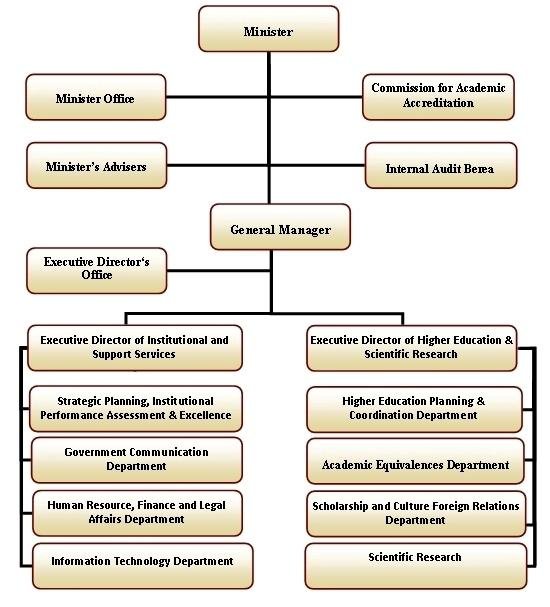
Master Plan for Dubai Higher Education
MHESR (2007) has analysed the present status of the higher education in the UAE, identified its lacking, crisis and quality gaps and generated Master plan with strategic directions emphasising on three major objectives as – ensuring higher education for the entire nation, addressing the quality of higher education and contributing the nation economic growth.
To achieving the objectives within 2020, the ministry has selected the following strategic action plan-
- The government has decided to funding higher education to facilitate open opportunity for all citizens within 2020 with federal investment,
- To access the market demand of higher education and students’ needs, the government has organised a Task Force that makes out students’ approaches and eagerness for higher education
- The strategic action plan also emphasised to spread out the university enrolments of male students at least fifty people above the existing baseline,
- The ministry has seriously driven to boost overseas scholarships for the Emirates students ensuring the carrier path;
- The Master plan has also deliberated to guarantee the quality of higher education by eradicating the existing quality gaps to build long-standing competence;
- It has also organised another committee to finding the alternatives for financing the higher education such as establishing trust for property, making out exact revenue flow for higher education;
- The most significant point is that for the first time government are going to provide opportunities for the expatriate to enrol in the stated funded Universities;
- The Master plan has also concentrated to involve huge investments for higher research dedicated to the national interest (MHESR, 2007).
How Dubai International Universities Influence the Student Has to Join
Hypothetically, motivation has built the groundwork for learning appetite of a student. Optimistic motivation strategy of the mentors have rather influenced teenagers who has get preparing themselves to entered into higher study specially moved towards university learning.
A lot of research report has concluded that pessimistic motivation has significantly restrained the young student’s psychological as well as physiological progress of higher study. Considering this issue, learning and teaching atmosphere has to be alert on crafting teaching attributes as well as institution’s motivation strategies.
For all categories of university degree researchers of the learning and motivation theory has drawn ‘one size fits all’ motivation tool through which teachers, students, parents as well as government education policies for both domestic and international universities have shaped their own view of higher studies and hence, patronize the higher education sector.
It has to be quoted that, three most common theories on motivation the attribution theory, goal theory and the self-determination theory have significant application result on continuation of higher study (Anderman & Midgley, 1998).
Motivation Strategy of Foreign Universities in Dubai
In the light of above discussion, foreign universities of Dubai have decorated their motivation strategies in their Dubai campus. Besides students of the higher study level and their parents, federal education policy formulation department has significantly considered following attributes before approval. A snapshot of foreign Universities’ motivation strategies at Dubai has pointed below (Devine, 2009).
- Flexible admission scope of the foreign Universities has massively attracted students of Dubai in their campus.
- Both domestic and abroad, high profile reputation of the overseas institutions
- Grow high popularity among peers group has able to draw significant attention of the students and their parents
- Brand image of the University is one of the key demands of globalization as well as effective motivation strategy
- Statistics of the job placement opportunities have noticeably considered by the interested students.
- Institute’s intra educational atmosphere has got considerable attention during admission time by both students and parents.
- Data base management of the student’s profile both previous and current add competitive value on motivation strategy.
- Scope of the availability during subject choice
- Reasonable level of tuition fees as well as scholarship and credit transfer opportunities.
- Suitable location of the campus proximity to the home and workplace or job location
- Flexibility of class schedules has more attracted working people and newborn baby’s mother. Additionally, undergraduate students who have eager to involved into part time job have also preferred class hours.
- University resources like classroom facilities, computer lab, library, bus services, play ground; cultural occasion practices, hostel, and research centre have great strategic tools fort the foreign universities.
- Certify and approval of the foreign universities by the Higher Education Ministry of Dubai has generated dependency and secured to the students
- Offered courses have ensured international recognition in both global education market and job market.
- Offered courses have also recognized by the domestic campus is another motivation attribute to attract local students of Dubai.
- After completion of course, award and certificate have provided by both local and mother university campus and it has a great opportunity for the students for further education as well as in job market.
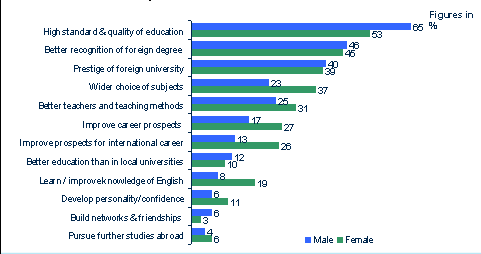
Degree of the Student’s Joining Trend
Current higher education scenario of Dubai has presented that there have around 49 foreign universities those have covered 51% HEIs of Dubai universities. Different education curriculum has covered 32% market segmentation of the higher education. Additionally, significant portion of aggregate student quantity has get involved in the higher education organism Dubai.
At the same time, few numbers of foreign universities of Dubai have taken initiatives to launch branch campuses through join venture approach. It has well known that most of Dubai inhabitants are of foreigner and it figured around 80%. Under this circumstance, foreign universities of Dubai have a large portion of non-Emirati students.
The undergraduate students have preferred study rather than working experience and in the opposite side, postgraduate students have paid attention more on current job/family business than study. However, working or post graduation students have favoured scholarship or sponsors support during higher study as well as further study. One third of the Emirati students have prior foreign universities (UK, USA, Canada, Australia or India).
In short, major areas of choosing foreign universities have included better job opportunity, scope of career transition, flexible admission curriculum and most importantly expenses of tuition fees and maintenance costs. (Devine 2009)
Research Methodology
Introduction
The main purpose of this chapter is to exemplify how the preferred research methodology will go with the prime goal of the dissertation investigation, and how it will complete the present study.
To formulate this dissertation, the researcher will pursue the major steps of Malhotra because it will be easy for the researcher to follow this approach. On the other hand, the case study approach will not be applicable here because the research questions starts with “how” and “what” (Yin, 2002, p.6).
Research Approach
Saunders, Thornhill & Lewis (2006) and Manion & Morrison (2007) pointed out that there are generally two research approaches, such as, qualitative and quantitative approach.
The researcher will apply both approaches to deliberate the paper because secondary data has already processed data and reliable while primary data or quantitative research gives the opportunity to know the opinion of the students.
However, the researcher will apply several techniques to gather primary data, but the factors affecting the decision of students to join international universities in Dubai is not a numeric concept to test.
Primary Кesearch
The purpose to generating primary data is to get specific outcomes of the research problem (Sekaran, 2006) and (Marshall & Rossman, 1999). For this reason, the researcher decided to collect primary data to get proper outcomes regarding the factors affecting the decisions of students to join international universities in Dubai.
To do so, the researcher would consider five International Dubai Universities for data collection where national and international students are available to interview. In addition, the researcher will interview at least 50 students from these selected five universities. However, the following table shows more information about the target respondents.
Table 1: Selected Respondents for Interview. Source: Self-Generated.
Interviews
Malhotra (2009) and Yin (2003) specified that interview is the best process to gather knowledge about the actual scenarios as “interview” would address as a communication mode that has contained both the features of consistency as well as the legitimacy.
They further addressed that face-to-face interview is the most effective approach, therefore, the researcher select 150 students from different department of five international Dubai Universities to collect primary data.
Data Analysis Process
In order to analysis the data, the researcher would apply several techniques; such as, he would verify all the data to remove unintentional results, incompatible and fabricated information about the factors of decision making process of the students.
For the purpose of scrutiny, the variables will be coded in a way that it would be easy to complete the data analysis, for instance, the independent variable in each of the model will be measured by maintaining a special techniques.
If the researcher designs a question by asking that Students like to study particular International Dubai Universities due to flexible entry requirement to what extent do you agree then he may select in either of the option which include strongly agree, agree, disagree, strongly disagree or neutral.
However, the researcher would refine primary data by considering related secondary data compare and contrast the relevance of the information about the decision-making factor to study in Dubai International Universities and after completing this process the researcher will use Microsoft excel to graphically represent collected data.
Significance of Secondary data
Miles & Huberman (1994) stated that secondary data has already published and recognised by the famous authors, and Malhotra (2009, p.107) argued that it is processed data for serving the current job. Cohen, Manion & Morrison (2007) pointed out that using of secondary data has many advantages because the information of these sources is more authentic and derived from significant study.
However, the researcher has designed entire literature review and conceptual framework by relying on the secondary information though the information was not adequate to solve the present purpose.
To formulate the paper, the researcher has used number of relevant books, the information from renowned published journals, related academic research paper on the decision-making process and attitude of students, emerald journal articles, and other data from web sites.
Questionnaire Design
Designing a questionnaire is one of the most significant parts of the dissertation as it directs the researcher to reach a conclusion and find out the research problem (Zikmund, 2006) and (Yin, 2003). On the other hand, Malhotra (2009, p.281) stated that questionnaire is not a pure science, so the researcher can develop a questionnaire by using his creativity.
They also provided the rational behind the importance of questionnaire and that is general discussion with target respondents may carry out unreasonable outcomes with different observation and opinion due to many men many minds while particular set of questions assist the respondents to focus only cardinal points.
At the same time, the researcher highlighted this issue because at least four chapters (especially Findings and results, recommendation and conclusion) of the dissertation has direct link with the response of the students.
Here, it is important to mention that the researcher has design the questionnaire with simple and easy questions as the students will get interest to fill up the entire questionnaire. However, the following table illustrates the key elements of this questionnaire for better understanding.
Table 2: The Questionnaire Design Process. Source: Self-Generated.
Limitation of Data Collection Process
Relevant academic journal, books, and other secondary resources are the initial problem to organise the paper. In addition, unreliable or fabricated information misguides the research in some case. Unfortunately, some articles were expensive for the researcher to download from the renowned sites was another problem.
Moreover, limited deadline to complete the paper creates the risk of simple errors. Finally, field survey or collected primary data was another difficult task to manage within very short time and limited budget.
Review of Data Collection Method
The researcher would dispatch 450 questionnaires among 150 students of five universities and it is expected that all students will fill up at least a single questionnaire. However, it has already mentioned that the questionnaire will be design in four parts. The first part will be to determine the personal information of the respondent.
Age, gender, country of origin, background education, and institution currently in, among others, will be the type of the issues address in this part. Subsequently, each of the following fraction will assess whether the student final decision-making procedure was in coherent with the suggest models of college selection.
This second part the questionnaire will intend to establish whether in the process, the factors suggested in the economic model of choice come to play. The following part shall mainly focus on determining the impact on choice status or attainment model or those embedded in the sociology and psychology aspects of life, has on the student.
Measurement and Scaling Process
- Nominal scales: This sort of measurement method indicates non-numerical questions, for instance, name of the target students or nationality or age group of them;
- Ordinal scales: This type of measurement system focus on specific questions in order to measure relative attitudes of the students;
- Multiple Choice – Single Response: In this stage, students will get at least three options, but they have to tick only one option;
- Likert scale: This dissertation will consider this scale to determine the factors to enrol International Dubai universities. For this reason, the researcher has designed third section of the questionnaire considering Likert scale because it consists of statements that express either a favourable or unfavourable attitude towards the object of interest –
- Strongly Agree = 5
- Agree = 4
- Neutral = 3
- Disagree = 2
- Strongly Disagree = 1
However, the following table would help to understand the measurement procedure.
Table 3: Measurement Stage with Scale Types in Questionnaire. Source: Self-Generated.
Sampling
As contact to the entire student is a costly affair and almost impossible, it will be better to cautiously choose a sample, which will derive credible result though the researcher has designed a questionnaire for interview. Moreover, it is expected that this result will reflect the position of entire population and it is not straight proportionate to the whole population and the data possibly will consist a marginal of error.
However, the population consists of freshman foreign students in five highly regarded international universities at Dubai. The researcher has already selected five institutions and from each institution, 30 students will be selected to feature in the sample volume.
Findings and Results
The key concern of the findings chapter is to study the results of the actual survey to assess and appraise the factors affecting the decisions of students to join international universities in Dubai.
Section A: About Respondents
Name of the Students
This was a common question essential to introduce with the respondents of the survey.
Sex of the Students
This was also a general question asked to all students to get a clear perception about the ratio of male and female students in order to find out whether there is any big difference between the numbers of males and females because of the conservative idea that people of Dubai expresses about Muslim women.
The percentage of the women in the universities would also reflect their decision-making capabilities while joining in international universities. It was found that there were 60 % males whereas females were only 40 %.
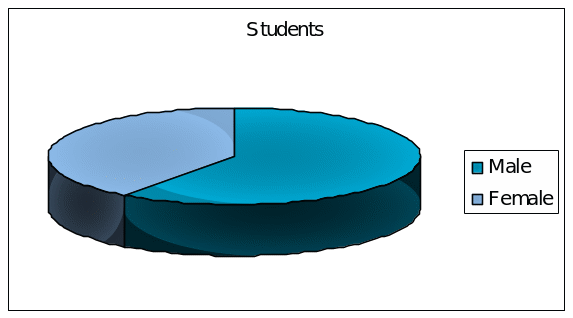
Result: This shows the fact that Dubai is still quite conformist when it comes to women education, and women of Dubai still falls behind in decision-making.
Institutes of the Students
The survey was carried out between 150 students, taking 30 students equally from each of the five universities, namely, the British University in Dubai, the American University Dubai, the University of Wollongong Dubai, the Middlesex University Dubai, and the Manchester Business School Dubai.
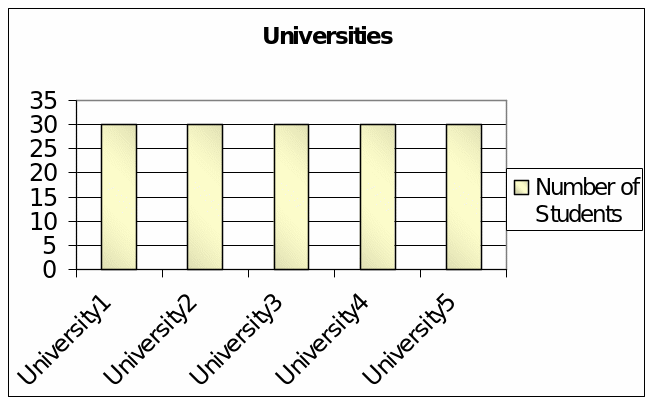
Nationality of the Students
This question was frequently asked to the students in order to assess the presence of international students in the Dubai universities. The presence of more overseas students would mean that they are relying on the services and the quality of education afforded by the Dubai universities.
Such reliance, on the other hand, would influence the decision-making of the national students, as they would believe the institutes to be of global standards increasing the number of students trying to take admission over there.
As this increasing number of students will increase the rate of competition, the comparatively weaker candidates will decide to switch on to other universities. According to the survey, there were 55 % overseas students against 45 % national students.
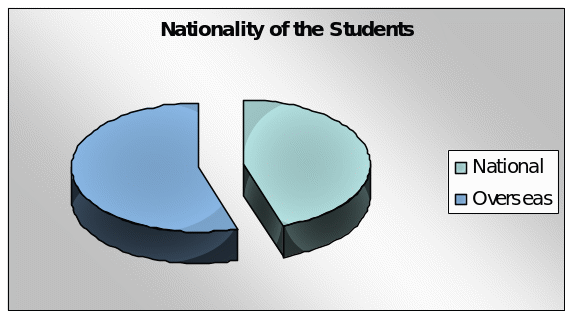
Result: This figure illustrates that there are higher number of overseas students; however, this adequacy of foreign learners could influence the decision-making of the national students to a certain extent by increasing the level of competition.
Status of the Students (Part-Time or Full-Time)
This common question was asked to the students with the intention to know their job status. The job status of the students is imperative for evaluating the factors that can manipulate the psychological features of the learners.
Undoubtedly, an employed student will have different viewpoint than a full time student about choosing his/her university; this is because full-time students use to have a lot of time in hand to study and take admission in institutes with high competition, whereas part-time students lacks sufficient time to study. This makes the part-time learners to decide to join in low-competition universities.
At the same time, the job status of the learners also influences the choice of high and low-cost universities; students with sufficient supply of money can deicide to afford in expensive universities of Dubai. The survey indicates there are 55% students were full-time, 40% part-time, and 5% retired students.
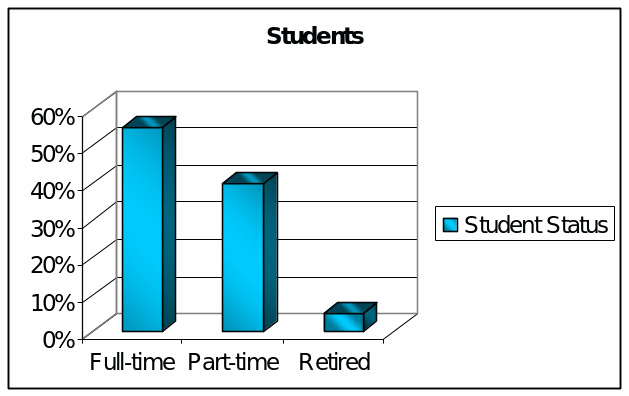
Result: The statistics of the full time and part time students shows that there are greater chances of higher competition. It is arguable that the part time students generally require higher time to complete their studies than full time students do.
Section B: Student’s View
Whether Dubai International Universities Maintain International Quality or Not
The question aimed to measure the students’ satisfaction and their expectations level from their universities to get an idea about the features that the students want from the universities.
By the term “international quality” the students have considered the quality of the lecture rooms, theatre rooms, computer labs, libraries, digital access to the universities’ database, common rooms, 24/7 online support from the query unit, etc. 60 % students argued Dubai universities to maintain international standards, whereas 36 % said no, and 4 % did not want to comment anything on this.
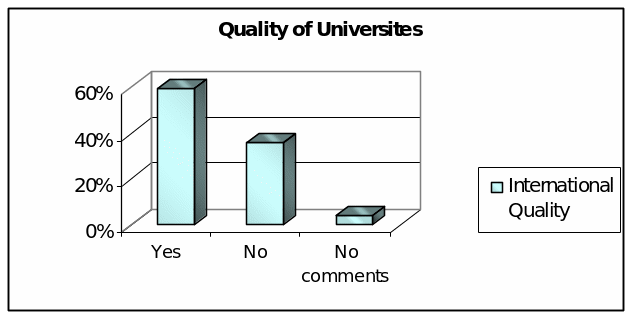
Result: Although more than half- percent students think the universities to maintain international quality, a good number of students are still unsatisfied with the qualities.
Do Reputation of International Universities Influences the Students or Not
Most of time a university’s popularity and public reputation influences the learners to take an admission over there. This question deliberately focused on the fact that how many students from different universities have joined in the respective institutes by the influences of its reputation.
Surprisingly, the survey has revealed the fact that about 65 % of the students out of 150 have agreed with statement that the institute’s reputation has influenced them whereas 35 % expressed negative approach to the question.
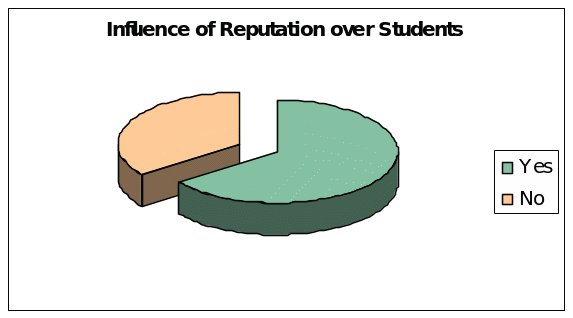
Result: The result shows that a large number of students bear a positive attitude towards the popularity of the universities.
The Main Factor to Choose Dubai University
The question tried to know the main factor that affects the decision making of the students while choosing the universities. The respondents had to express their own reason of why they have joined in the respective institutes.
The options included job opportunity, reputation, cost, and quality. Amongst the options, 30 % students argued costs as the main factor, 26 % went for job opportunity, 24 % said they joined their institute for its reputation, and 20 % considered quality.
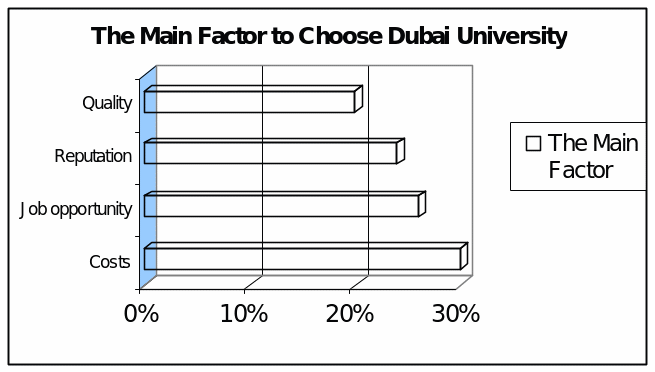
Result: It is notable that most of the students of both home and foreign countries (which includes South Asians as well), considers costs while deciding their institutes, whilst job opportunity comes as the second highest choice. As compared with costs, fewer pupils consider reputation and quality as a deciding factor.
Whether Education Fees Are Reasonable Considering Other Foreign Universities or Not
As an answer to this question, 70 % respondents suggested that the fees of Dubai universities are less than any other international universities; on the other hand, 28 % students disagreed to this fact and 2 % pupils refused to comment anything on this.
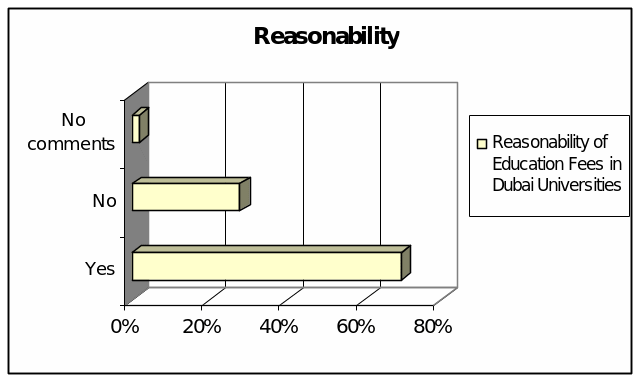
Result: The outcome of this question indicates that the majority of the students consider their universities to involve relatively lower fees than the international institutes.
Whether the Library Facilities are Excellent to All or Not
The services provided by the universities may affect the decision-making of a student to choose his/her institute.
Ensuring superior library facilities and online access to library for each student is one of those decision-inducing factors. 54 % students criticised the library facilities provided by their universities and 42 % argued that they are satisfied with there universities’ library services; however, 4 % students did not comment anything on this.
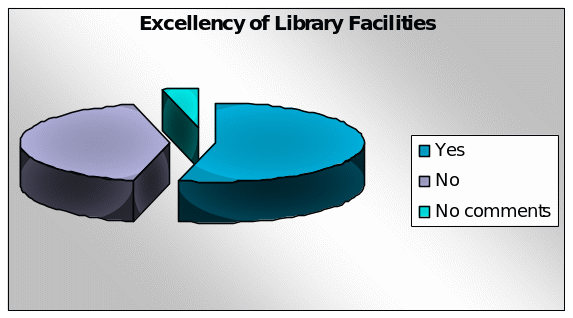
Result: The result reflects the fact that maximum student are unsatisfied with the library facilities, while others think that the facilities are adequate.
Do the Universities Provide Portal Services or Not
76 % students out 150 respondents suggested that their respective universities provide portal services. However, according to rest 20 % students, their universities do not provide portal service facilities; 4 % have not argued anything on this.

Result: Though a large number of the Dubai international universities provide portal services to their students, still a good number of them are failing to satisfy their student by giving the highest possible effort to ensure superior services.
Would You Recommend International Dubai Universities to Others
This question has deliberately asked to the students with intention to take an overall idea about their contentment level from their institutes and to know whether they feel interested to promote their own universities to others in order to influence their decision-making about joining in the universities.
Positive answers to this question would reflect the reasons and the features of the universities for which the students feel so gratified about endorsing them to others. It is noteworthy that only 46 % students feel interested in recommending the universities, whereas rest 54 % gave a negative feedback to the question.
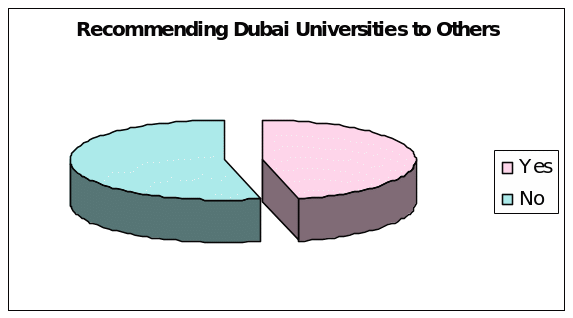
Result: The result illustrates that most of the students do not want to endorse their universities to others, whilst a few of them have showed the interest.
Section C
Have International Dubai Universities Integrated IT Properly
Undesirably, merely 26 % students argued that their universities have proper IT integration in their infrastructure. The rest 74 % thinks that the institute’s IT facilities are poor in terms of online 24/7 enquiry systems for learners, digital library facilities, free access to the university’s database, online payment and fee submitting conveniences, and so on.
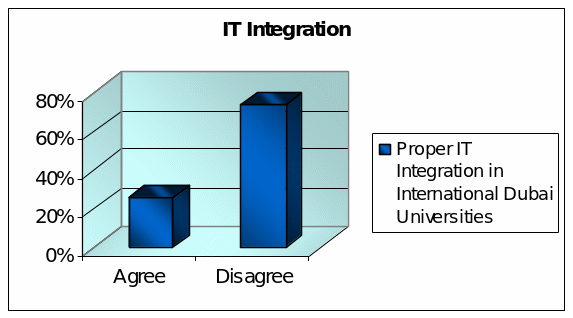
Result: The Dubai international universities are still falling back in terms of latest technological advancements and IT integration in their systems.
Do You Agree That Dubai Universities Will Be Able To Compete With UK or US International Universities
30% of total students think that the Dubai international universities have the prospect and the competence to compete with the universities of the UK and US, whereas 70% are disagreeing to this fact.
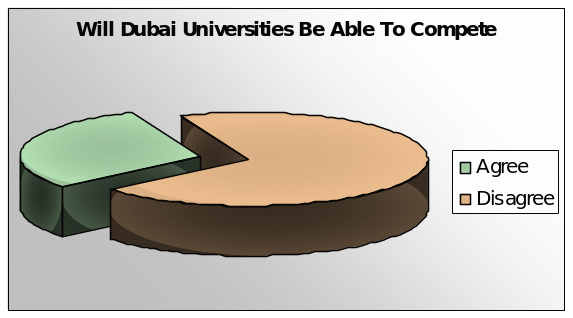
Result: The Universities still lack sufficient competence to compete at international level.
Whether Students Like To Study in International Dubai Universities Due To Flexible Entry Requirement
About 52% respondents have strongly agreed that flexible Entry requirements most of the time induces the decision-making of the students to join in the Dubai universities, whereas 32% agreed to this and the rest 10% disagreed that flexible entry requirement is not a decision-inducing factor for taking admissions at universities. In addition, 4% strongly disagrees to this and only 2% students stayed neutral.
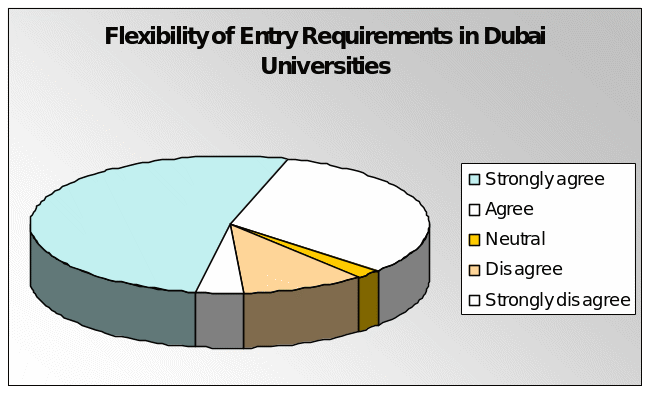
Result: Maximum students support the fact that entry requirements should be flexible in order to attract more and more students.
Do You Think Curriculum or Course Range Should Increase
About 40% students strongly agreed that the curriculum and course ranges of the Dubai universities should increase in order to attract more students, 30% students agreed, 4% students were neutral, whilst the other 20% thinks that the existing course ranges are sufficient to do the task and only 6% respondents strongly opposed the fact.
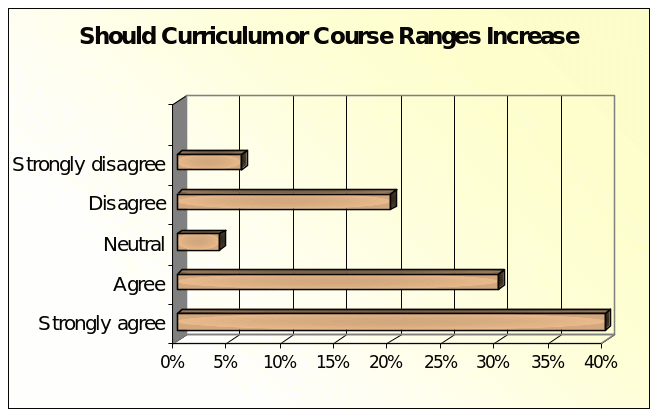
Result: Increasing course ranges and extending curriculum, according to most of the students, can help new students in their decision-making.
Do You Think the Infrastructure Should Develop To Attract More Students
The entire educational infrastructural designation of a university can draw the attention of the students influencing their decisions.
This question has therefore aimed to know that how many students think this as an important factor to influence decision-making. 60% students strongly agreed to this point, 10% have agreed, and only 2% was neutral whereas 20% respondents said that the infrastructural designation is not important to attract students, but 8% students have strongly disagreed.
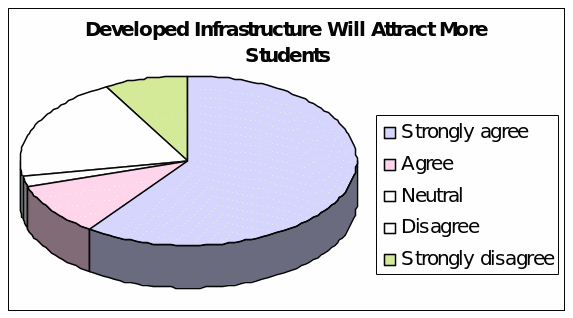
Result: A large number of students have emphasized on the infrastructural designation for attracting learners.
Discussion
Current Higher Education Circumstances in Dubai
Usually, higher education in Dubai has segmented by two phase graduation and post-graduation degree. As stated by a research report (The UAE Ministry of Higher Education and Scientific Research) thirty two percent of the universities are currently international and the higher education ministry has certified only thirteen universities/institutes as domestic. All of the international higher education institutes in Dubai have operated their study curriculum by English.
Conversely, domestic higher education institutes’ (HEIs) students have vital differences from the internationals. Additionally, there have also segmentation between Emirati students and students from abroad who have come into Dubai to study. In this case, international HEIs have needed to enquire before admission.
These requirements have included quantity of the students who have interested to study in their Dubai branch, previous schooling qualification, preferred subjects, and solvency to pay tuition fees and what is the key considerations/motivation to study here.
Three nations India, United Kingdom and United States of America have the largest number of international HEIs branches in Dubai. Above 48% of aggregate HEIs, students have studied in the international university campuses held in Dubai.
On the other side, among total international HEIs 44% have qualified to provide both under graduation and post-graduation study curriculum and in respectively 17%, 40% have able to provide under graduation and post-graduation courses. In both federal and international HEIs 70% of the total students, are from abroad and around 51% are from Asian countries. (Devine 2009)

Key Motivation to Move Towards International Universities
Key motivations to move towards the international HEIs have diverse into several points of view and this differentiation has included student’s own considerations, parents’ considerations and federal government’s encouragement to develop educated workforce for better economic development.
Key motivations have illustrated bellow describing all of the issues as above. Additionally, here also be highlighted on the overseas students view.
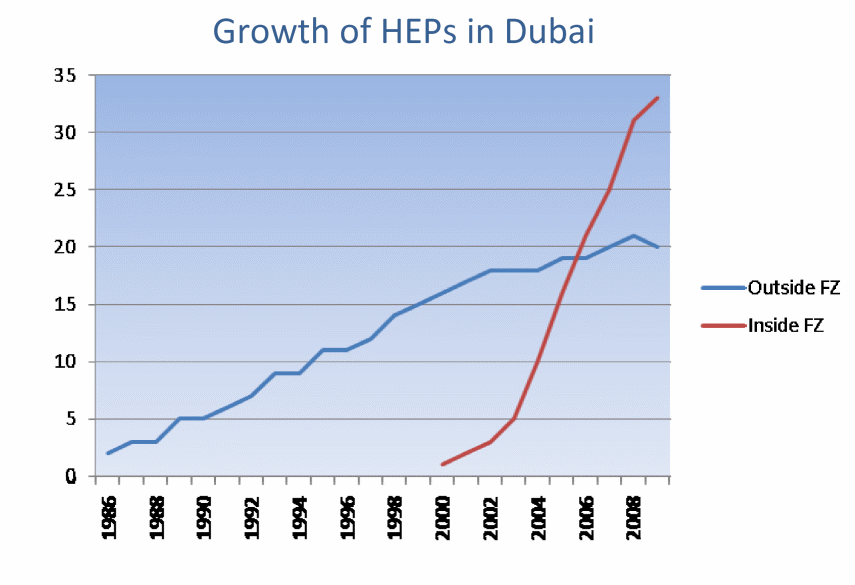
Perception of the Undergraduate Students
Following are the key dynamics those have motivated undergraduate students to study in the international HEIs.
- Significant mode to entered into developed life structure
- Thrust to be enriched in schooling
- Continuously developed own personality as well as be well mannered and sociable
- Qualified for the both federal and international job market
- Get financial independency after student life
- Stronger social position
- Scope not to be isolated from family and friends
- Scope to get international level education infrastructure at home
- Affordable to provide tuition fees as well as better standard of living, safer and secured home intimacy
- Family members do not allow studying in abroad
Observation of the Post-Graduation Students
- Scope of career transition as well as greater remuneration package
- Specialized in professional skills
- Enjoy better competitive advantages
- Scope to get promotion or have greater chance of business development
- Have potentially to consult as a top level executive
- Superior educational quality
- Accessibility to enter into international HEIs with a variety of courses and reasonable tuition fees
- Flexible class scheduling and working opportunity
Viewpoint of the Parents
- Standard of education has structured with superior quality
- Certification by both federal and international recognition
- Get prestigious status by studying in the international universities
- Availability of courses along with professional skill development training, modern technology utilization facilities surrounding a global teaching atmosphere
- Proficiency in English language, internship and part time job opportunity during studying
- High profile career transition with high scale remuneration package
- Easy to credit transfer in the mother country campus as well as strong potentiality to immigrant in the overseas countries
- Have great scope to examine educational quality
Considerations of the Overseas Students
- Utilization of the scope of studying in the international universities
- Flexible tuition fees, admission requirements as well as students visa
- Since Dubai is a liberal Islamic country, they have as safer as secured for the foreigners of diverse religion
- More intimate towards motherland than any other region
- Family and friends have stayed in Dubai/UAE for a long time
- High standard of living as well as flexible job market
This paper has been focused on the trend of study in the international universities of Dubai and the aforesaid discussion has highlighted on the key inspiration forces behind the decision making process. In short, socio-economic as well as demographic dynamics have also impact on decision-making process of international institute choice and subject selection.
Additionally, chronological analysis of the hypothetical study framework the ultimate outcome has significantly influenced by student’s parents, peer group like friends and relatives.
Hence, job-market entrance potentiality along with the professional skill development availability has taken place for selecting international HEIs in Dubai. Conversely, tough competitive atmosphere of the international HEIs, their marketing strategies moreover strategic competitive advantages have also vital in this case (Rodrigues and Jayashree, 2009).

The Superior Features Offered by the DIU to Attract Students
In following part key attracting strategies of the foreign universities in Dubai has summarized where these strategies has referred as the internationalization strategies. Her it has to be quoted that formulation of these strategies have mostly discussed on external challenge overcome tips (Williams, et al., 2010).
- At first, foreign universities have concentrated on student’s quality in short previous academic profile and then provide adequate support to reach student’s individual strategic goal of study and profession.
- Secondly, foreign universities have always aware of continuous development of their administrative as well as study curriculum. Alternatively, they have conscious on optimal modernization of the internal environment thus they would easily attract students in their campus.
- Thirdly, foreign university’s strategy formulation has always notice their academic resources, future planning, and development over and above their current and previous reputation as well as brand image globally.
- Fourthly, learning and teaching approach of a foreign university in Dubai has a clear vision on their direct contribution of economical resources where international student and mentor recruitment has transformed after a certain period to flexible entrance of skilled teacher and bright learner
- Fifthly, entrance of teachers and students in the foreign universities of Dubai has strategically segmented new study curriculum, product demand in the global market along with the features of the academic dynamics since education is a pure service sector.
- Sixthly, few of the foreign universities in Dubai has mostly focused on post-graduation degree to encourage working people as well as interested groups who have involved with research tasks as well as financial support through scholarship program.
- Finally, not only foreign universities have also provided satisfactory support to the mentors for their research undertakings.
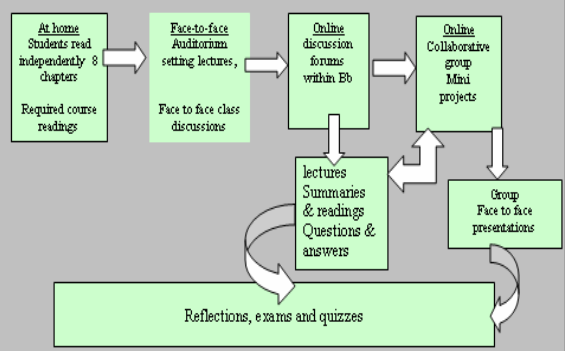
Scopes in the Job Market After Completing Graduation/Post-Graduation
After completion of higher education there have a lot of job opportunity in Dubai. Moreover, high-educated students of Dubai international universities have great demand in the international market. Conversely, Dubai as well as UAE would be kept regional development due to elevated demand for higher study.
At the same time, higher education and international universities in Dubai have not sufficient resources to provide workforce-managing infrastructure. In short, available study manners have not skilled enough to fulfil workforce demand. Offering of the typical education system has currently positioned in a niche market atmosphere where available higher education has greater prospect to be matured.
Today, Emirati people have encouraged switching into higher education culture for better job/ business opportunity. By offering customised courses on higher studies both domestic and international universities would have been providing stronger internal facilities where job placement and internship of a student would be responded more certainly and efficiently than now.
International universities in Dubai from different region have entered into the education market with availability of customised services. Moreover, their marketing approaches/strategies have also featured with various development vision and objectives though they have failed to keep their commitment in few cases and cannot match their steps with global demand.
For instance, universities of UK in Dubai have currently made available supply of rich and high demand (Road & rail systems/maintenance, real estate maintenance, ports and ship chandling, environmental engineering, renewable energy, manufacturing and manufacturing-related, logistics related to supply chain management, aviation, architecture, events management, financial securities, reinsurance, social research, research methods, statistical analysis, special needs education, comparative study of western law with sharia, languages and arts) study courses globally. Education policy of Dubai has enough concern on individual strategy formulation and implication and hence the education ministry of Dubai has paid attention on this suggestion to decorate modern education higher system in Dubai.
Consequence of this, higher education market in Dubai would be operated entry of global education service thus competitive higher education would be able to choose right student for the right track (Devine, 2009).
Job Market During 2010 in Dubai After Completion of Higher Education
Geographically, Dubai has always kept demand for business and event centres. Over the last decade, Dubai has achieved remarkable development growth in the region of metropolitan infrastructure and this has symbolized healthy job market circumstances. Economic strategy of Dubai has kept balanced economy where durable progress has evaluated based on business sector.
Additionally, education segment of Dubai has manufactured high profile human recourses that have able to solve critical difficulties, strong analytical ability and inter personal as well as team working efficiency.
Higher education ministry of Dubai has taken adequate initiative to magnify quantity of graduate student origin of both emirate as well as expatriate. Moreover, encourage further education after graduation for continuous development of professional skill of Dubai (Fox and Hayward, 2010).
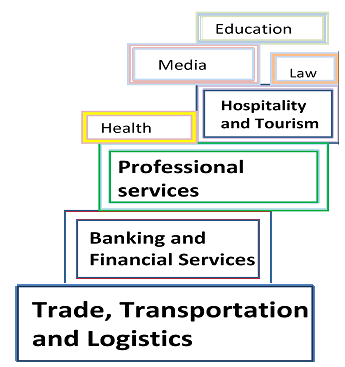
The Key Constraints to Participate in the Dubai International Universities
On the opposite side of emerging development in both economy and education, higher education in Dubai has still faced considerable challenges. Following are the major issues those resisted to enter into the international universities in Dubai. (Fox and Hayward)
First, according to the Ministry of Education (2010), ninety-four percent of Emirati university student have not enough skill for the tertiary education like science, physics, chemistry, biology, maths, geography, social science, ethnics over and above English proficiency.
Though year-by-year Emirati student’s school level educational achievement has emerging but the alarming new is that during university foundation level, they have failed to pass without an improvement exam.
Second, rather than quantity, higher education/university degree has required superior qualities, which have included key educational areas like engineering, medical science and other science grounds in the international job market.
For the younger Emirati University, graduates from both of domestic and international university have still requisite to attain relevant working/professional skills to compete in domestic as well as international market.
Third, in this globalization era it has embarrassing for Dubai that they have continuing gender bias attitude in both the area of university education as well as in national and international labour market.
It’s a surprising assumption is that compare to male in Dubai females have higher degree in quantity but the job market scenario is quite opposite and here satisfactory number of female graduates have not still interested to be professional by service or business areas.
Forth, Dubai socio-cultural values have still kept continuing conflict with the employment nature. Emirati social attitudes and edge of the cultural values have not yet enough flexible as their free market economy developed.
Fifth, Dubai government has not had adequate information on both of the higher/university degree as well as major limitations of the human resources or workforces. Conversely, entrepreneur and the national stakeholders have not yet proposed about the sector based professional skill requirements. This unenthusiastic situation has also de-motivated students to taken international university degree.
Within last decade university degree has rather commercialized globally not only just in Dubai and it has to be quoted that in recent years higher education has purely driven by the market demand for the mobilization of free and capital market economy.
Scholars from diverse international universities have argued that key mission of education system has to skilled student individually but the demand of free market and capitalistic economy has turned the industrial system as their slave.
Additionally, subjects those have skilled both individual’s professional and moral grounds such as philosophy, biology, maths, social science, other science departments and tertiary education have now suffered a lot due to lack of proper mentor as well as student’s interests to study and develop this sector.
It has declared a lot of time in many conferences and seminars, that efficiency of the free market economy has comparatively sound than a ministry but the practical performance graph cannot show any durable benefits yet. In short, this economic system has just highlighted narrower view. At this moment, researchers have tensed how could be this organism has kept continuing long time?
Moreover, only two percent public universities in Dubai have now capable to offer Islamic studies, Arabic courses. On the opposite side, in both domestic and international university have presented a graph where 26% students studied business courses, 17% are in engineering departments and 10% students in the IT (Information Technology) department but they do not required to learn tertiary education like mathematics or science.
Embarrassing and upsetting news is that in newer future in not only Dubai but also globally higher education would be faced high-qualified mentors for the tertiary education. During this globalization era, key motto of higher education is to make certain employment opportunity.
But in Dubai higher education has fail to keep significant impact on economy as well as social norm though higher education is the key driver for social revolution behind strong economic foundation (Swan, 2010).
Finally, considering all of the crises on Dubai higher education, following are the ultimate challenges of Dubai international universities (DeVaney, 2010).
- Currently, emerging atmosphere of Dubai has to come on the point that, what are their demands from higher education as well as international universities, which have, launch their branches in Dubai. Additionally, what would be the economic impact provided by these universities on Dubai’s economic development.
- Both constitutional and regulatory turmoil has crested by faster economic development and in case of Dubai recent free zone market system/infrastructure as well as resolution has differed from traditional.
- Key global considerations and attachments is another major challenge where it has enough sturdy to structure definition of the global demand and then match it with the quality of higher education as well as standard of the international universities in Dubai.
- Domestic efficiency development is a significant challenge where dependency on the international universities for higher education is a threat to enter into global education market. Additionally, strong economy has required proper utilization of the domestic human resources/workforce rather than dependency on overseas support.
Conclusion
Recommendations
McGlennon (2006) pointed out that the global indicators connecting the research capabilities in Dubai is very low in comparison to the global standard and the index demonstrates that the research and development of education is substandard while the funding in this sector is very poor.
This dissertation would recommend to both the government of the UAE and the International Universities working in this territory to take into account to motivating student’s decision making for higher education-
The most influential recommendation for the International Universities in Dubai is to urge the UAE government to eradicate discrepancy among the state universities and private Universities. Rather than regulating the International Universities in Dubai, the role on Education Ministry required to be cooperative.
International Universities in Dubai would required to unite in a single platform by formatting an associate to bargain and negotiate with the government and as government for partial grants and some financial support argue that they are producing more graduates than the state Universities.
The International Universities would also recommend the government to eliminate discrepancy among local students and expatriate students in context of enrolment, assessment and tuition fees with special package for the grater interest of the nation.
It is highly emergence for the government to understand that the expansion of research facility and innovation is deeply concerned with exploration of higher education and the government of Emirates has already late to realise the truth but the international Universities in Dubai kept progressive step to major motivation of the students in this regards.
It is most indispensable for the International Universities in Dubai to advocate to the government to reduce religion integration with the higher education arguing that the religion sentiments always prohibits free thinking, complimentary knowledge cultivation and scientific thought and philosophy.
From this research, it has evidenced that the number of expatriate students is significantly greater than the number of local students, and after completing the education if these expatriate students go back to this home country then the resource utilised by them may not be useful for the progression of UAE.
Thus to protect the outflow of talents, international Universities in Dubai would campaign to the government that, it is immediate needs for the country to offer immigrant status for the expatriate students and design lucrative carrier path for them.
It has also evidenced that among the expatriate students the highest proportions of the students are from Bangladesh, India, Pakistan and Sri Lanka and the international Universities of Dubai would present county specific indication expatriate students from which would deliver more potentialities for UAE. Among this South Asian region India and Sri Lanka has no religion linkage with UAE.
Bangladesh and Pakistan both are religion connection with UAE by Muslim but Pakistan has many backdrops radicalism and terrorism while Pakistan the heavenly place for Al Kayda. At the same time, people of Bangladesh are Muslim but they are moderate and free from radicalism.
Thus, the expatriate students from Bangladesh are extremely potential for the UAE in long run to contribute sustainability for the national economy.
The International Universities of Dubai have urged to take the responsibilities to motivate the students to contribute the nation with their gained knowledge and wisdom in different higher research and other service sectors.
Reputation of any university influence the students to study on that place, which should also develop by designing the courses in accordance with international standard, providing high qualified teachers and lectures;
To take decision about the Dubai International Universities, the students consider rich library, e-portal and online library facilities, therefore, the universities should develop such issues;
Academic atmosphere has to be attractive for students though the population of the student has grown to 9,480 in 2008 from 1950 in 2003 and it is expected by 2015 to hit 38,410;
Dubai Universities should encourage to introduce courses both in part time and full time with distance learning facilities with most modern IT tools;
The education Ministry of Dubai should assimilate a separate moderator team or faculty committee to compulsory incorporation of core subjects with IT integrated manner starting for undergraduate program to PhD level complying with the educational standards identified by research works;
It has also recommended that the International Universities of Dubai would also organise a consulting team with senior professors and educationalists to support the education ministry for policy making and defining the strategies to achieve the goals of strategic Mater plan with in 2020.
The International Universities of Dubai also necessitate introducing special programme for the students such as scholarship, student exchange programme, placement to the home country campus and such initiative would influence the student’s decision to enrolling increasing number of students.
Conclusion
Within the speedy drives of higher education of Dubai, International Universities have most significant role to motivating the student’s decision making for their selection of enrolment. The government has already realised the necessity of higher education and scientific research, which has been evidenced through the establishment of separate ministry for higher education and research.
The international Universities has also the pioneer role to motivating student as well as to increasing the number of student to the Universities that ultimate generating an enhancing rate of graduates in every year.
Due to high per capita income and increasing number of students, the International Universities in Dubai consider it as an emerging market of education business as well as a service industry where the integration of harmonised policy for them can accelerate this sector to a more speedy upfront move.
The expansion of research capabilities taking into account of the strong background of oil economy, the country is eager to accelerate its service industry where the international Universities have adopted directional strategies for their market growth.
These strategies of the international Universities in Dubai involved with some key elements to effectually achieving the business objectives upholding the Master Plan of the Ministry of Higher Education & Scientific Research and producing an extremely skilled workforce with sound technical and scientific know how ready to ensure sustainability and global standard of education to face the challenge of globalisation.
Reference List
Anderman, L. H. & Midgley, C. (1998) Motivation and Middle School Students. Web.
Cohen L., Manion, L. & Morrison, K. (2007) Research Methods in Education. 6th ed. New York: Routledge.
DeVaney, J. (2010) DUBAI: Regulation is not the only challenge. University World News, 18. Web.
Devine, A. (2009) Higher Education in the UAE. Web.
Fox, W. & Hayward, B. (2010) Developing a workforce for the knowledge society in Dubai: higher education challenges. Web.
Gaad, E. Arif, M. & Scott, F. (2006) Systems Analysis of the UAE Education System. International Journal of Educational Management, 20(4).
Gomez, K. A. (2008) Motivation at the Middle School Level: New Theory Based on Student Voices. Web.
Heck, R. H. & Crislip, M. (2001) Direct and Indirect Writing Assessments: Examining Issues of Equity and Utility. Educational Evaluation and Policy Analysis. 23(19).
Malhotra, N. K. (2009) Marketing Research- An Applied Orientation. 5th ed. Prentice-Hall of India Private Limited.
Marshall, C. & Rossman, G., (1999) Designing qualitative research. 3rd ed. Thousand Oaks – CA: Sage.
McGlennon, D. (2006) Building research capacity in the Gulf Cooperation Council countries: Strategy, funding and engagement. Web.
MHESR (2007) Educating the Next Generation of Emiratis: A Master Plan For UAE Higher Education. Web.
MHESR (2009) Ministry’s Organization Chart. Web.
MHESR (2009) Ministry’s Vision. Web.
Miles, M. & Huberman, M. (1994) Qualitative Data Analysis. 2nd ed. Beverly Hills, CA: Sage.
Pathak, V. & Pathak, K. (2010) Reconfiguring the Higher Education Value Chain. Management in Education Journal, 24(4). Web.
Patronis, M. (2005) Motivational Constructs in an Online Learning Environment in a UAE University. Web.
Reigeluth, C. M. (1999) Elaboration Theory. Web.
Reigeluth, C. M. (2010) Elaboration Theory. Web.
Rodrigues, G. & Jayashree, P. (2009) Socio-Demographic Factors as a Predictor of the College-Choice Process in International Universities: Some data from the United Arab Emirates. Web.
Saunders, M., Thornhill, A. & Lewis., P. (2006) Research Methods for Business Students. 4th ed. London: FT Prentice Hall.
Sekaran, U. (2006) Research Method for Business. 4th ed. John Wiley & Sons, Inc.
Shults C. (2008) Making the Case for a Positive Approach to Improving Organizational Performance in Higher Education Institutions: The Community College Abundance Model. The Community College Review, 36(133).
Swan, M. (2010) Universities have taken wrong turn. Web.
UNESCO (2009) World Conference on Higher Education: Higher Education in the Twenty-first Century Vision and Action. Web.
Williams, R. et al. (2010) Internationalisation Strategy. Web.
Yin, R. K. (2003) Case Study Research: Design and Methods. 3rd ed. Beverly Hills, CA: Sage.
Zikmund, W. M. (2006) Business Research Methods. 7th ed. Orlando: Harcourt Publishers.